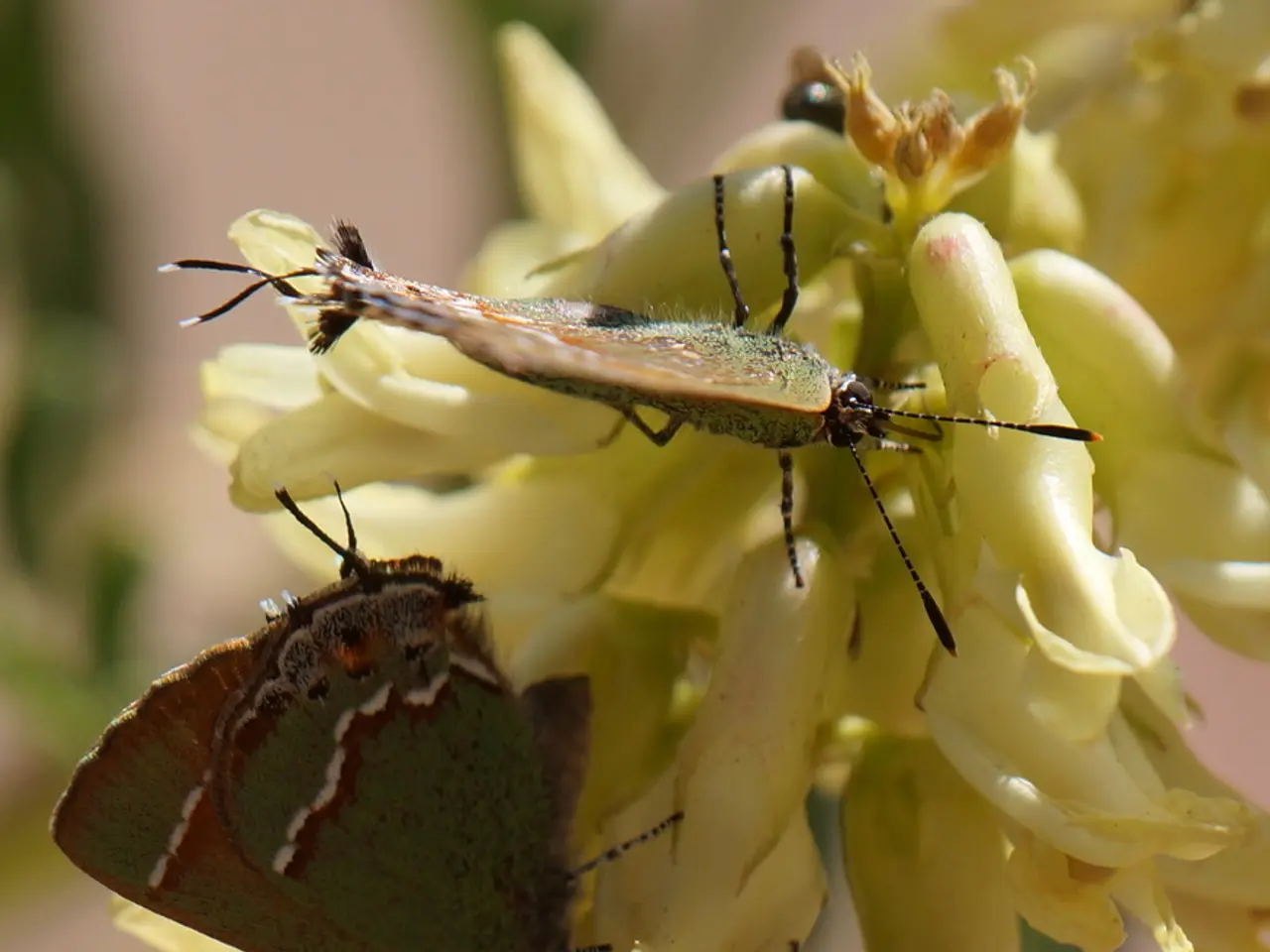Butterfly enthusiasts, boost your garden with 18 attractive blossoms that particularly entice Monarch Butterflies!
Creating a Monarch Butterfly Garden: A Guide to Attracting these Vibrant Migrators
Monarch butterflies, with their iconic orange and black wings, are a delight to see fluttering around gardens. To attract these beautiful creatures during their annual migrations, consider planting a variety of flowers that cater to their needs. Here's a list of plants that can help you create the perfect monarch butterfly garden.
Essential Host Plants for Monarch Larvae
- Common Milkweed (Asclepias syriaca) – This essential host plant provides a vital food source for monarch caterpillars.
- Swamp Milkweed, Butterfly Milkweed – These milkweed species are also favored by monarchs and serve as essential host plants.
Nectar-Rich Flowers for Adult Monarchs
- Blazing Star (Liatris spp.) – These plants add vertical spikes of purple blooms to gardens, attracting monarchs in large numbers during their migrations.
- Butterfly Bush (Buddleia) – Rich in nectar, this plant attracts many butterflies.
- New England Aster (Symphyotrichum novae-angliae) – A late blooming nectar source that provides food for monarchs in the autumn.
- Anise Hyssop (Agastache foeniculum) – A nectar-rich perennial that is a favourite among monarchs.
- Butterfly Weed (Asclepias tuberosa) – Another milkweed species that is favored by monarchs.
- Purple Coneflower (Echinacea purpurea) – A strong nectar provider that monarchs love.
- Joe-Pye Weed (Eutrochium purpureum) – This towering native perennial offers big nectar-rich flower clusters that are attractive to monarchs.
- Black-eyed Susan (Rudbeckia hirta) – With its nectar and bright flowers, this plant is a popular choice among monarchs.
- Zinnia – This popular garden flower is easy to grow and provides accessible nectar for monarchs.
- Cosmos – Easy to grow and thriving in poor soils, cosmos flowers offer nectar for monarchs.
- Coreopsis – This plant produces nectar and supports pollinators, including monarchs.
- Phlox – Highly attractive to pollinators, including monarchs, due to its tubular flowers.
- Salvia – Tubular flowers make this plant ideal for butterflies like monarchs.
- Pentas – This tropical nectar-rich flower is loved by monarchs.
- Verbena – This nectar-rich flowering plant is appealing to butterflies, including monarchs.
Choosing the Right Plants for Your Monarch Garden
For the best monarch garden, incorporate milkweed species to serve as host plants for monarch caterpillars and combine them with a variety of nectar-rich flowers that bloom throughout the growing season to provide continuous food for adult monarchs. Perennials with open or tubular flowers that suit monarch probosci are preferred.
Avoiding Pesticides and Neonicotinoids
Avoid using pesticides, especially neonicotinoids, to protect butterflies and other pollinators. These chemicals can be harmful to the delicate ecosystem that supports monarchs and other pollinators.
Secret Weapons for Attracting Monarchs
- Blue mistflower – This plant is a secret weapon for attracting monarchs during migration with its fluffy, sky-blue flowers that bloom best in late summer and autumn.
- Beggarticks – This plant offers a much-needed food source for monarchs heading south with its cheerful yellow or white blooms that bloom in late summer.
- Common yarrow – Easily identified by its umbrella-like clusters of blooms, this plant is a favorite landing pad for monarchs during summer.
- Sunflowers – These plants provide nectar to monarchs in late summer and offer seeds for birds later.
By cultivating a variety of butterfly-friendly flowers, you can create a stunning visual display and support monarch butterfly populations. Bonnie Ferrero, the author, embodies a holistic approach to life, with interests in hiking, cooking, gardening, and home decorating.
Incorporating these plants into your garden can help create a haven for monarch butterflies, providing them with a continuous nectar supply from early summer through fall, supporting their feeding and migration needs. Happy gardening!
- To create a monarch butterfly garden, plant Milkweed species like Common Milkweed, Swamp Milkweed, and Butterfly Weed as essential host plants for monarch caterpillars.
- For nectar-rich flowers, consider adding the Blazing Star, Butterfly Bush, New England Aster, Anise Hyssop, Purple Coneflower, Joe-Pye Weed, Black-eyed Susan, Zinnia, Cosmos, Coreopsis, Phlox, Salvia, Pentas, Verbena, Blue mistflower, Beggarticks, and Common Yarrow.
- To provide a continuous food source for adult monarchs, choose perennials with open or tubular flowers that cater to their proboscis.
- To protect monarch butterflies, avoid using pesticides, particularly neonicotinoids, as they can harm delicate ecosystems and pollinators.
- Enhance your monarch garden by incorporating blue mistflower, Beggarticks, Common yarrow, and sunflowers, which are secret weapons for attracting monarchs during migration and later provide food for birds.
- By cultivating a monarch butterfly garden, you can contribute to the pollinators' health, improve your home-and-garden lifestyle, and enjoy a stunning visual display, all while aligning with the fashion-and-beauty and gardening interests of Bonnie Ferrero, who embodies a holistic approach to life.




